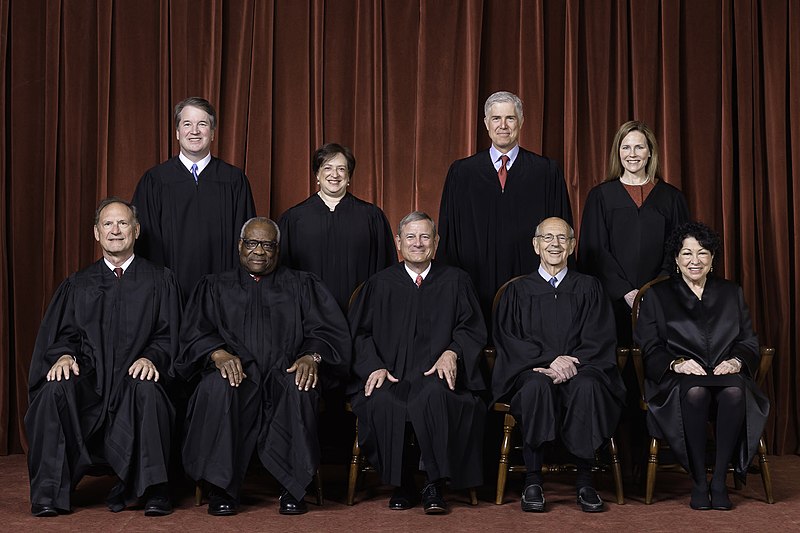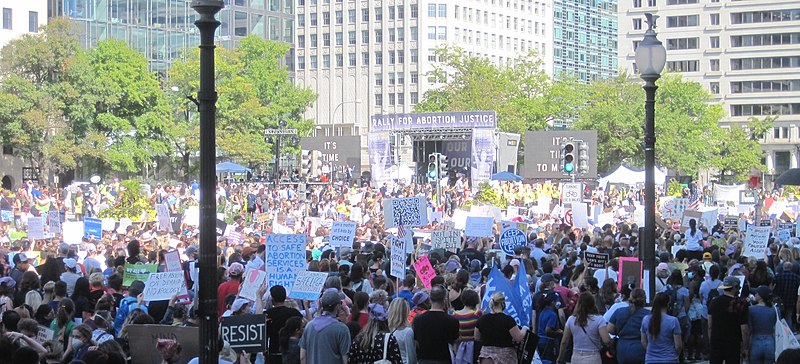TWH – Last night, in what has been described as “unprecedented” and “shocking” by some media outlets, Politico published a leaked first draft of the Supreme Court’s decision that would reverse the landmark ruling of Roe v. Wade.
There has been concern over a ruling like this being handed down ever since the balance of the court swung to the right with the appointment of conservative, now Justice, Amy Coney Barrett who replaced Justice Ruth Bader Ginsberg on the Court in late October 2020.
The shocking and unprecedented aspect in all of this is not the probable decision itself, but rather the leaking of the first draft. And while some will point to the fact that the Roe v. Wade decision itself was leaked to Time Magazine reporter David Beckwith prior to the ruling being made public, this differs substantially.
The full decision of the original ruling was given to Beckwith by Justice Lewis Powell’s clerk, Larry Hammond with the understanding that Beckwith would not publish anything on it until after the decision was formally handed down and made public. This is according to author James D. Robenalt, who interviewed Hammond for his book, January 1973: Watergate, Roe v. Wade, Vietnam, and the Month That Changed America Forever.
Beckwith spun the story and Time ran it with the headline, The Sexes: Abortion on Demand, which was released just hours before the formal decision was made public.
What happened yesterday is significantly different. This leak is not one of a fully decided case opinion, and it is months ahead of a formal ruling being released. It highlights a level of the sanctity of the Court being compromised in a way that truly is unprecedented.

The Roberts Court, April 23, 2021 . Seated from left to right: Justices Samuel A. Alito, Jr. and Clarence Thomas, Chief Justice John G. Roberts, Jr., and Justices Stephen G. Breyer and Sonia Sotomayor. Standing from left to right: Justices Brett M. Kavanaugh, Elena Kagan, Neil M. Gorsuch, and Amy Coney Barrett. Photograph by Fred Schilling, Collection of the Supreme Court of the United States [Public Domain]
While Politico and The New York Times ran with publishing the leaked draft last night, there were initial questions about its authenticity. Recent reporting from The Washington Post and CNBC both cover the statement released by Chief Justice Roberts confirming the draft is authentic, and that he has directed the Marshal the Court to launch an investigation. The statement also made a point of referring to the process and the draft as part of the routine deliberations of the Court and that the draft “does not represent a decision by the Court or the final position of any member on the issues in the case.”
If this is indeed the ruling that ends up being handed down, it will be the equivalent of a political and social nuclear bombshell. The draft decision written by Justice Samuel Alito is repellent in both its verbiage and intent, as well as the attempt to align the reversal of Roe with racial inequity rulings like Plessy v. Ferguson.
If Roe is overruled, it will be perhaps the most significant ruling since Brown v Board of Education in 1954, which effectively canceled the “equal but separate” rhetoric of Plessy.
It’s important to note that the 1973 ruling on Roe was a majority decision with a 7-2 vote by justices. Equally important is the level of support that existed for legalizing abortion, even among clergy members. This fact is often ignored and instead replaced with the idea that all religious leaders and people opposed abortion.
The reality is that a large number of religious leaders worked to create networks to ensure that women could access both legal and illegal abortions safely. This is not just some liberal pipedream or left-wing reimaging of history, it is fact. It is also a fact that an average of roughly 800,000 women a year managed to obtain an abortion, legal or not, between 1955 and Roe making abortion legal in 1973.
While the number of abortions increased to an estimated 1.6 million in the years immediately after the 1973 ruling, numbers would begin to decline in the 1980s with the rise of more free-standing clinics that offered not just abortions but also family planning.
How those numbers will translate to the current era is anyone’s guess since times are different and offer more options for preventing pregnancy. The most recent numbers reflect that close to 630,000 women had abortions in 2019.
Oral contraceptives were introduced and approved for use in 1960, but the Supreme Court ruling in Griswold v. Connecticut cemented their legal use as a right. Access to oral contraceptives could possibly also be threatened with the reversal of Roe since it is one of the legal precedents that paved the way for Roe.
Roughly 65% of the women between the ages of 15 and 49 use some form of birth control. That means 110 million women or about one-third of the population of the U.S. Of that group, 14% use oral contraception, the most commonly used form of birth control. This form of birth control would no longer be accessible and would have horrifying ramifications for women. This would be compounded by restricted access to abortion.
A brief review of the countries that have restricted or rolled back abortion provides an unpleasant view of what the future might hold for women in the U.S. Currently, there are 24 countries where abortion is illegal under any circumstance. Perhaps the greatest irony of making abortion illegal or restricting access is that it does not prevent abortions from happening. In fact, according to the World Health Organization, it only makes abortion unsafe.
And let’s not forget that the women who will be the most heavily impacted by restricting access to abortion are those who can least afford it: women of color.

2021 Women’s March, many speakers bemoaned a looming threat to Roe. Credit: WomenArtistUpdates CC BY-SA 4.0
In essence, overruling Roe will kick it back to the individual states to decide what the parameters on abortion will be. A number of states, thirteen to be exact, already have what are known as “trigger laws” on the books that will most of which will become active and limit or prohibit abortion the minute Roe is vacated.
While there are states that have made provisions to keep abortion legal and accessible, sixteen in total, with four of those, plus the District of Columbia, having laws that codify the right to abortion throughout pregnancy without state interference. This means women in certain parts of the country–like the Midwest and the entire Southern half of the country will have to travel in some cases thousands of miles to receive an abortion.
That of course begs the question of why restrict access if it will not reduce the number or frequency of abortions? There are a number of possible answers to that question, none of them being anything but unsavory. The broader message it sends is that the minority who would impose such restrictions care very little for the lives of millions of women that would be impacted.
And we need to be clear here, while a reversal of Roe might be made by a slim majority on the Court, it would still be a minority decision when it comes to the population of the U.S. A recent Washington Post-ABC News poll showed that 58% of Americans polled believe that abortion should be legal and 54% are in favor of the Court upholding the ruling of Roe.
Then what is next? Another landmark decision that is liable to come under fire is Obergefell v. Hodges which recognized and legalized same-sex marriage by redefining marriage. Conservatives have continually voiced opposition to same-sex marriage and would like nothing better than reverse Obergefell.
When members of the Court begin citing the constitution in its original form and what its intent does or not imply without taking into consideration the amendments and laws that have continued to build on it, Houston, we have a problem.
The framers of the constitution likely could not have envisioned a future where women, people of color, and other minorities have the legal right to not only vote, but also hold elected office.
And what about those of us who follow and practice some form of religious faith that is a minority belief? Are we safe? That remains to be seen.
Consider this, the U.S. population of over 330 million is composed of approximately 51.1% women and a majority of them will be affected by the rights Roe guarantees being rescinded. If the Court is willing to punch over half the country in the gut, it is not hard to imagine it crushing a mere million or so Pagans beneath its heel.
The Wild Hunt is not responsible for links to external content.
To join a conversation on this post:
Visit our The Wild Hunt subreddit! Point your favorite browser to https://www.reddit.com/r/The_Wild_Hunt_News/, then click “JOIN”. Make sure to click the bell, too, to be notified of new articles posted to our subreddit.